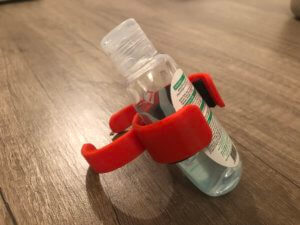Medical Engineering in the Age of COVID-19
Due to the COVID-19 pandemic, there has been an increase in worldwide demand for thermal scanners, respirators, and ventilators. This has been accompanied by an increased need for medical disposables such as gloves, respirators, medical masks, face shields, single-use syringes, and drapes. As a result, medical engineering and manufacturing both have temporarily shifted their focus and the results are fascinating.
Additive Manufacturing
Shortages of some items have led to innovative design and manufacturing, much of it involving additive manufacturing using polymer materials. For example, Old Dominion University has been 3D printing masks and mask components made from PLA and designed so that they can be easily sterilized and reused. Europe has already seen companies in the 3D printing industry volunteer their equipment and knowledge to aid in manufacturing replacement parts for critical equipment such as oxygen and respirator valves, and many other countries are doing the same thing.
Ventilator Designs
Many countries, including the United States, are worried about a potentially deadly shortage of ventilators. Various technology firms worldwide such as Nvidia are working to design critical care devices that can be produced both quickly and inexpensively. NASA has been given permission to start production of their emergency use ventilator that can be manufactured and built quickly, with the only drawback being its limited lifespan.
In addition, ventilator manufacturers such as Medtronic have ramped up production and publicly shared their design specifications for one of their ventilator models so others can help meet this critical need.
Innovation
Engineers all over the world are looking for ways to make the treatment of COVID-19 patients easier and safer for medical personnel. For example, engineers in the Boston area have teamed up local doctors to develop a 3D printed bracket that will hold the tube and respirator hookup together in ventilator patients. The goal is to prevent release of the COVID-19 virus into air when these connections come undone, as they often do.
Others at Boston University are looking at polymer nasal swabs that will do a better job of collecting mucus for COVID-19 tests, which could increase the reliability of testing and help with testing material shortages. At the Oxford Institute of Biomedical Engineering, engineers are leveraging wearable technology to allow nurses to track the vitals of COVID-19 patients who are not on ventilators and thus must remain mobile to recover.
Conclusion
The COVID-19 pandemic has changed how much of the world lives, and has affected a shift in the focus of many engineers. Trademarks of this shift include the use of additive manufacturing for PPE and replacement parts for life-saving equipment, a fresh look at ventilator designs that emphasizes manufacturability and availability, and the birth of innovative approaches to medical issues related to the pandemic. And, in this midst of this, companies like Advanced EMC are still working hard to make available the right polymer seals and bearings needed for medical equipment.

